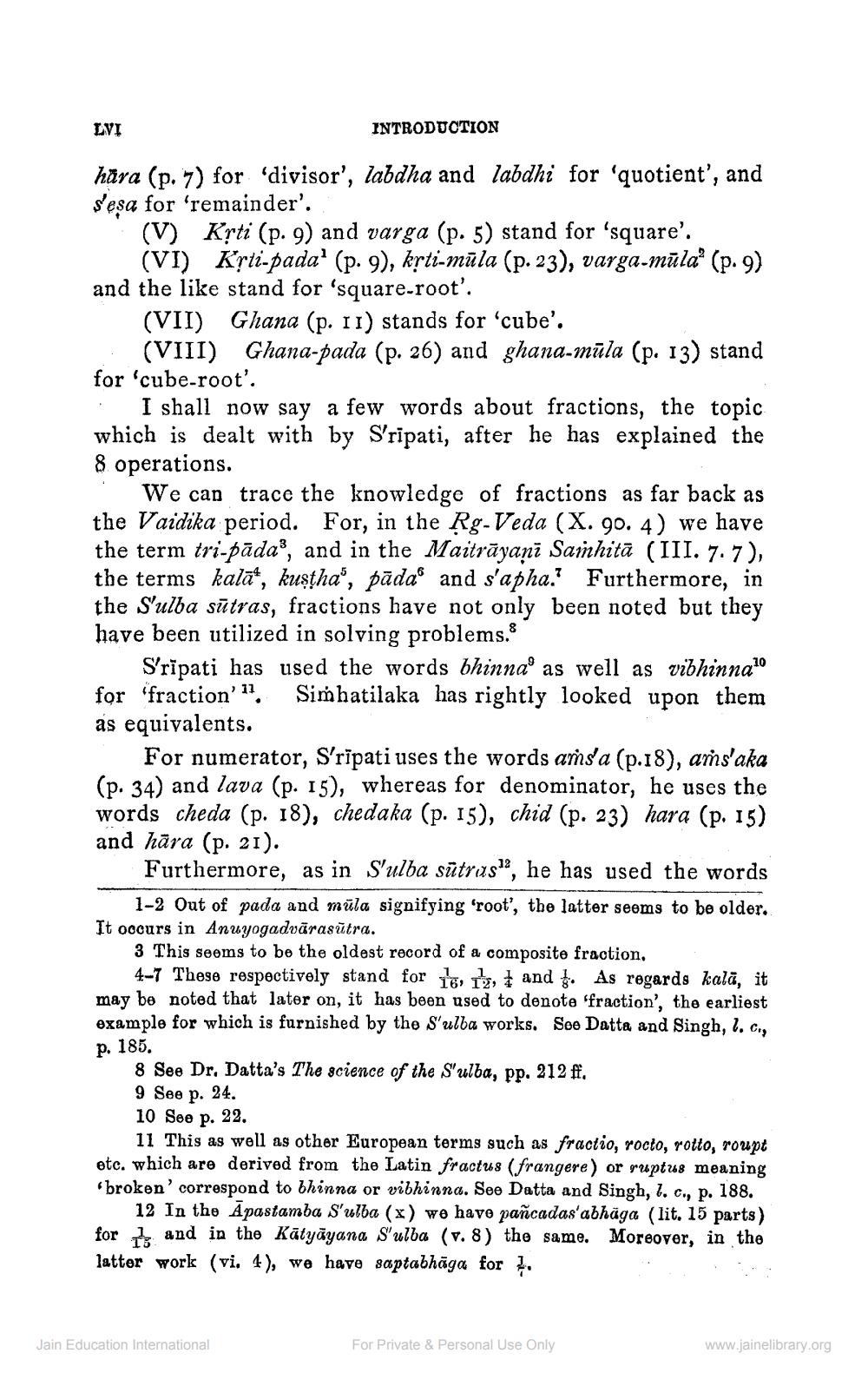________________
LVI
INTRODUCTION
hara (p. 7) for 'divisor', labdha and labdhi for 'quotient', and sesa for 'remainder'.
(V) Krti (p. 9) and varga (p. 5) stand for 'square'. (VI) Krti-pada1 (p. 9), kṛti-mūla (p. 23), varga-mūla3 (p. 9) and the like stand for 'square-root'.
(VII) Ghana (p. 11) stands for 'cube'.
(VIII) Ghana-pada (p. 26) and ghana-mula (p. 13) stand for 'cube-root'.
I shall now say a few words about fractions, the topic which is dealt with by S'ripati, after he has explained the & operations.
We can trace the knowledge of fractions as far back as the Vaidika period. For, in the Rg-Veda (X. 90. 4) we have the term tri-pada3, and in the Maitrayani Samhita (III. 7.7), the terms kala, kustha, pada and s'apha. Furthermore, in the Sulba sutras, fractions have not only been noted but they have been utilized in solving problems.
S'ripati has used the words bhinna as well as vibhinna10 for 'fraction' 11. Simhatilaka has rightly looked upon them
as equivalents.
For numerator, S'ripati uses the words ams'a (p.18), aṁs'aka (p. 34) and lava (p. 15), whereas for denominator, he uses the words cheda (p. 18), chedaka (p. 15), chid (p. 23) hara (p. 15) and hara (p. 21).
Furthermore, as in S'ulba sutras, he has used the words 1-2 Out of pada and mula signifying 'root', the latter seems to be older.. It occurs in Anuyogadvarasutra.
3 This seems to be the oldest record of a composite fraction.
4-7 These respectively stand for 16, 12, and . As regards kalā, it may be noted that later on, it has been used to denote 'fraction', the earliest example for which is furnished by the S'ulba works. See Datta and Singh, 7. p. 185.
C1
8 See Dr. Datta's The science of the S'ulba, pp. 212 ff.
9 See p. 24.
10 See p. 22.
11 This as well as other European terms such as fractio, rocto, rotto, roupt etc. which are derived from the Latin fractus (frangere) or ruptus meaning 'broken' correspond to bhinna or vibhinna. See Datta and Singh, . c., p. 188.
12 In the Apastamba S'ulba (x) we have pañcadas'abhäga (lit. 15 parts) for and in the Katyayana S'ulba (v. 8) the same. Moreover, in the latter work (vi. 4), we have saptabhaga for 4.
Jain Education International
For Private & Personal Use Only
www.jainelibrary.org




